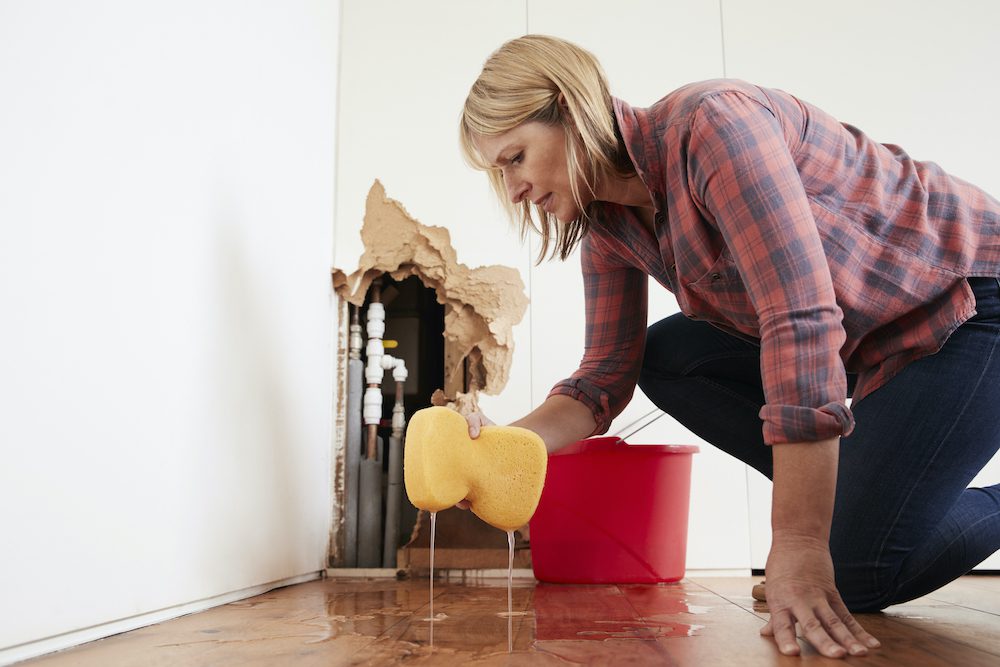This post below relating to Hacks to detect leaks is incredibly enlightening. Don't skip it.

Early detection of dripping water lines can alleviate a prospective disaster. Some small water leaks might not be visible.
1. Check Out the Water Meter
Every home has a water meter. Checking it is a guaranteed way that assists you uncover leaks. For beginners, turn off all the water sources. Make certain no one will certainly purge, use the tap, shower, run the cleaning machine or dishwashing machine. From there, most likely to the meter and also watch if it will change. Considering that no person is utilizing it, there need to be no motions. If it relocates, that shows a fast-moving leakage. Likewise, if you discover no changes, wait an hour or more as well as inspect back once again. This suggests you may have a sluggish leak that might also be underground.
2. Inspect Water Usage
Assess your water costs as well as track your water usage. As the one paying it, you should discover if there are any inconsistencies. If you find sudden changes, in spite of your intake being the same, it implies that you have leakages in your plumbing system. Keep in mind, your water costs should fall under the same variety monthly. An unexpected spike in your expense suggests a fast-moving leakage.
A consistent rise every month, even with the very same routines, shows you have a slow leak that's additionally slowly rising. Call a plumber to thoroughly examine your building, particularly if you really feel a warm area on your flooring with piping underneath.
3. Do a Food Coloring Test
When it comes to water intake, 30% comes from bathrooms. If the color in some way infiltrates your dish during that time without flushing, there's a leak in between the storage tank as well as bowl.
4. Asses Exterior Lines
Do not fail to remember to examine your outside water lines as well. Test faucets by attaching a garden pipe. Should water seep out of the connection, you have a loose rubber gasket. Replace this and make sure all links are limited. It will help get it expertly checked out and kept annually if you've got a lawn sprinkler system. One little leakage can squander tons of water and also increase your water costs.
5. Inspect as well as Analyze the Circumstance
Home owners need to make it a practice to examine under the sink counters and even inside closets for any bad odor or mold and mildew growth. These 2 red flags suggest a leak so prompt attention is called for. Doing regular inspections, even bi-annually, can save you from a major problem.
Examine for discolorations as well as weakening as a lot of pipes as well as appliances have a life expectancy. If you presume leaking water lines in your plumbing system, don't wait for it to rise.
Early detection of leaking water lines can alleviate a prospective catastrophe. Some little water leaks may not be visible. Inspecting it is a guaranteed method that assists you find leakages. One small leakage can throw away loads of water as well as surge your water costs.
If you think dripping water lines in your plumbing system, do not wait for it to escalate.
How to Know If Your Home Has a Hidden Leak
Water Meter Reveals Inexplicable Water Usage
If you’d like to test whether or not there’s a leak somewhere in your home, you can do this using your water meter. Here is how to conduct the test:
Don’t use any water in your home for at least 30 minutes; this also means not turning on faucets or water-using appliances.
Go outside, and check your water meter for activity.
If your water meter shows that there was activity, even though no one was using any water, this proves that there is a leak in your home.Visible Mold or Mildew Growth
Leaks behind walls create moist, dark environments that allow mold and mildew to grow and thrive. Eventually, you might see mold growth forming on the wall closest to a hidden leak.
If mold is growing in an area that receives a high amount of moisture, such as a bathroom, it may simply be an indication that better ventilation is needed. However, if you see mold growth on a wall or the ceiling in an area where you would not expect, you probably have a hidden leak.
Musty, Mildew Odor
Sometimes you might not be able to see the mold or mildew that is growing as a result of a leak. However, the smell can give the problem away just as easily. If you catch a whiff of something musty, there’s a good chance that old water is collecting somewhere in your home that you can’t see.
Stained/Warped Walls, Ceilings, or Floors
When your home soaks up water, a variety of red flags can become visible, including ceiling stains, bubbling drywall, warped walls, and sagging floors. While these issues can be caused by excess humidity, they can also be signs that a pipe or plumbing connection has started leaking behind your walls.
Inexplicably High Water Bill
After a while, you get a general sense for what your water bill should be. If you own a pool or sprinkler system, your bill will tend to be higher during summer. However, if you receive a water bill that seems especially high, and you can’t figure out what caused it, then you may have a hidden leak somewhere that’s increasing your bill.
https://www.plumbingjoint.com/blog/2019/july/how-to-know-if-your-home-has-a-hidden-leak/
.jpg)
I found that blog posting on Hacks to detect leaks while doing a lookup on the search engines. Sharing is caring. Who knows, you will be doing someone a favor. We value reading our article about Finding hidden leaks.